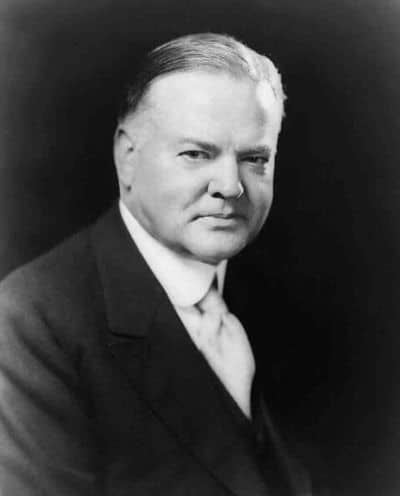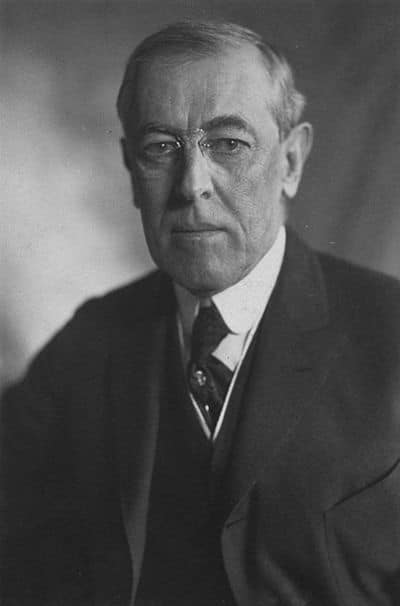Table of Contents
ToggleSources
- https://www.whitehouse.gov/about-the-white-house/presidents/martin-van-buren/
The official White House website provides authoritative information on U.S. presidents, including Martin Van Buren's birth, political career, and presidency. - https://www.britannica.com/biography/Martin-Van-Buren
Encyclopaedia Britannica is a reliable source for detailed biographical information, including Van Buren's early life, political career, and presidency. - https://millercenter.org/president/vanburen
The Miller Center at the University of Virginia offers comprehensive scholarly resources on U.S. presidents, including Van Buren's political rise, presidency, and legacy. - https://www.loc.gov/item/today-in-history/december-05/
The Library of Congress provides historical context and details about Martin Van Buren's birth and early life, including his Dutch heritage and upbringing in Kinderhook, New York. - https://www.nps.gov/mava/learn/historyculture/index.htm
The National Park Service offers historical insights into Martin Van Buren's life, including his political career and later years, with a focus on his home in Kinderhook, New York.
Key Points
- Martin Van Buren was born on December 5, 1782, in Kinderhook, New York, to Dutch-American parents.
- He was the first Dutch-American president and served as the eighth U.S. president from 1837 to 1841.
- Van Buren had a successful legal career before entering politics, where he became a key figure in New York state politics.
- He served as U.S. Senator, Governor of New York, Secretary of State, and Vice President under Andrew Jackson.
- Van Buren's presidency was marked by the economic Panic of 1837, which led to widespread bankruptcies and financial instability.
- He proposed the Independent Treasury Act to address the banking crisis, though it faced strong opposition and was delayed until 1840.
- Van Buren faced challenges with the slavery issue, trying to maintain a balance between Northern and Southern interests.
- His foreign policy was marked by calm diplomacy, including handling the Caroline incident and avoiding war with Mexico over Texas annexation.
- After losing re-election in 1840, Van Buren ran for president again in 1844 and 1848 but was unsuccessful.
- He died on July 24, 1862, at age 79, from bronchial asthma and heart failure.
Summary
Martin Van Buren, the eighth U.S. president (1837–1841), was born in 1782 in Kinderhook, New York, and was the first Dutch-American president. His presidency was marked by the economic crisis of 1837, during which he advocated for financial reforms like the Independent Treasury Act, though his efforts faced strong opposition. Despite his diplomatic skills and attempts to balance North-South tensions over slavery, Van Buren lost re-election in 1840 and failed in subsequent political comebacks, retiring from public life before his death in 1862.
When was Martin Van Buren born?
Martin Van Buren was born in 1782.
Where was Martin Van Buren born?
Martin Van Buren was born in Kinderhook, New York.
How old was Martin Van Buren when he became president?
Martin Van Buren was elected at the age of 54.
What years was Martin Van Buren president?
Martin Van Buren was president from 1837-1841.
When did Andrew Jackson die?
Martin Van Buren died at the age of 79 in 1862.
How did Martin Van Buren die?
He died of bronchial asthma and heart failure.
Originally from the Netherlands, Van Buren was the first Dutch-American president. In 1821, he was elected to the United States Senate and later served as the eleventh governor of New York State. During the first term of President Andrew Jackson, Van Buren entered the cabinet as Secretary of State.
In 1832, Van Buren was nominated as Jackson’s vice president (the eighth vice president of the United States) and was nominated as the presidential candidate in 1835. In 1836, Van Buren defeated four opponents of the Whig Party and was elected president.
Four years later, the re-election campaign failed. Later, he participated in two elections, both of which he was defeated. Since then, he withdrew from the political arena.
Early life
Martin Van Buren was born on December 5, 1782, in Kinderhook, New York. He was a descendant of immigrants from the Netherlands who settled in the Hudson Valley in 1631. His father was a farmer and also ran a tavern that often served as a political meeting place and where young Martin was first introduced to politics.
Education
Van Buren attended local schools and later joined Kinderhook Academy until the age of 14. In that era, lawyers were an enviable profession and a shortcut to wealth. In order to change his destiny as soon as possible, Van Buren started studying law.
Practicing Law
In 1803, he received permission to work in court. He managed to establish himself as a successful lawyer, and this promised him a good future in this profession. But, at the same time, he became famous in local politics. Everyone knew him as an ardent supporter of the views of the Republicans. As a result, Martin decided to connect his life with politics.
Political career
In 1812, he was elected to the New York state Senate, defeating a Federalist MP. With each passing year, he played more and more important roles on the political scene of his home state. For example, he, along with other Republicans, organized a political group called the Albany Regency. This group has long played a very important, if not the main, role in the politics of the New York state.
Van Buren became a staunch supporter and admirer of President Madison. He agreed with a series of measures taken by the government to develop the economy, actively safeguarding the interests of debtors, and advocated that the state should intervene in fraudulent activities in the banking industry.
He gave many speeches in Parliament, firmly supporting the war against Britain in 1812 and then supporting the government’s diplomatic actions to end the war.
In 1815, Van Buren was named Attorney General of New York. During this time, he decided to hone his skills and establish himself as a skilled politician.
Political upsurge
In 1821, Van Buren was elected a senator of Congress, where he sat until December 20, 1828. During this period, he focused on the reorganization of party activities, which secured control in New York State.
In 1824 he supported William Crawford for the position of president, who, however, lost to John Quincy Adams. Adams Jr. was elected president, implementing a “nationalist” policy.
In Congress, Van Buren raised the banner of anti-nationalism and made it difficult for Adams’ domestic and foreign policies to make a difference. At the same time, Van Buren’s political prestige rose.
Governor of New York
In 1828, Van Buren organized a coalition of the South and the North to help Jackson in the election. Van Buren ran for governor of New York. The purpose of this move was to provide Andrew Jackson with votes in New York State.
In 1829, Van Buren assumed the post of governor of New York State. During this period, a decree was issued to curb fraudulent behavior in the banking industry. But Van Buren’s purpose as governor was mainly to support Jackson in the election. Through his efforts, Jackson won the election in New York State.

Get Smarter on US News, History, and the Constitution
Join the thousands of fellow patriots who rely on our 5-minute newsletter to stay informed on the key events and trends that shaped our nation's past and continue to shape its present.
US Secretary of State and Vice President
After two months in office, he resigned after President Jackson offered him to take over Secretary of State in his administration. Thanks to his diplomatic skills, he managed to end the conflict between the United States and Great Britain over the availability of markets in the West Indies. Van Buren also sent people to negotiate with Turkey and concluded a bilateral treaty that was beneficial to the United States. He also negotiated with Mexico on the purchase of Texas.
In domestic affairs, Van Buren was President Jackson’s right-hand man, helping Jackson solve many problems and crises. In order to win the trust of the president, the fifty-year-old Van Buren also learned to ride a horse so that he could accompany him when he walked his horse. In return, Jackson chose Van Buren as his successor.
Vice President Calhoun was both Jackson’s partner in the presidential campaign and his political heir, but his position was gradually replaced by Van Buren. Calhoun was unwilling to suffer from this loss, and he and his party members were also seeking opportunities to retaliate. After brewing behind the scenes, Van Buren resigned as Secretary of State in 1831 and was appointed US minister to Great Britain by Jackson.
Vice President
In 1832, Jackson nominated Van Buren as a candidate for vice president when he was running for his second term. As Vice President, Van Buren fully supported Jackson’s various governance measures and continued to play a role in the key issues. This further strengthened Jackson’s idea of helping him become president. Although Van Buren did not fully agree with Jackson on some issues, as long as the president made a decision, Van Buren always supported it.
President Jackson fulfilled his promise. According to his arrangement, the Democrats had identified Van Buren as the party’s presidential candidate as early as May 1835. Contending with him was the Whig Party. At this time, the Whig Party had just been formed, the program was unclear, and the organization was loose. Its strategy was to let several famous Whig Party candidates participate in the elections in their respective spheres of influence to block Van Buren.
But in the United States, an important factor in creating a president is the advantages of political organization and campaign strategy. Van Buren made full use of the mature organizational structure of the Democratic Party and went both ways on issues of common concern (such as the federal economic policy, how to treat the slave system, etc.), trying to please the South and the North. Therefore, he successfully won the election, but the votes of both sides were very close.
Presidential term
On March 4, 1837, Van Buren became the eighth president of the United States. The results of the election made him realize that the strength of the opposition is strong, and the winner must maintain a humble and calm mind.
Economic collapse
When Van Buren came to power, the entire United States was in a state of prosperity and calm. But two months later, an economic collapse quickly swept across the country. This led to numerous bankruptcies of companies and banks, as well as higher prices, especially for food. Van Buren attributed the main cause of the crisis to the American banking system.
In September 1837, Van Buren proposed the “Independent Treasury Act,” suggesting the establishment of independent treasuries to manage government funds to ensure financial independence and prevent certain interest groups from taking advantage of the banking industry. However, due to strong opposition, the bill did not become law until 1840.
In order to support the national finances, Van Buren also asked for the issuance of ten million US dollars in Treasury bills. However, Van Buren’s various measures were not implemented quickly. Congress’s actions were extremely slow. Opposition parties took the opportunity to attack the government’s corruption and incompetence and ignored the lower classes. The Democratic Party also suffered divisions, making the Van Buren government difficult. But Van Buren remained firm, acting in accordance with his established policy.
There were more problems during the economic crisis. Ordinary workers in the United States not only had long working hours and poor working conditions but the wages and benefits of government workers were also relatively low. Therefore, they continue to protest and strike and put pressure on the government. Facing the widespread social crisis, in March 1840, the Van Buren government agreed to reduce the daily working hours to ten hours.
Slavery
In Van Buren’s era, the issue of slavery had become a prominent issue affecting the stability and unity of the country. In this regard, Van Buren’s purpose was to try to ease the contradiction between North and South and maintain the status quo. On the Texas issue, he managed to prevent the merger plan because it would lead to the expansion of slavery areas and the division of the country, for which he was attacked by slave owners in the South. However, because he continued to implement Jackson’s Indian policy and forced Seminole to move from Florida to the west, he encountered strong opposition from the anti-slavery side.
Foreign policy
In diplomacy, Van Buren was superior to the politicians of the time. On the issue of the Canadian border crisis, he was very calm and sophisticated. Van Buren encountered the Caroline incident as soon as he took office. Some Canadian insurgents opposed to British rule retreated to the Niagara River after failing to attack Toronto. The Americans who sympathized with them immediately sent a rescue boat to transport supplies to them.
One of the ships named “Caroline” was intercepted by the British army. The ship was destroyed during the conflict and caused American casualties. President Van Buren made a public speech, condemning the atrocities of killing civilians and sending troops to strengthen its guard. But at the same time, he declared that the United States would not intervene in Canada’s internal affairs.
Annexation of Texas
An issue that remained unresolved since Jackson’s presidency was the annexation of Texas, demanded by the US expansionists. Negotiations between the Republic of Texas authorities and the United States resumed in August 1837. On the advice of Secretary of State John Forsyth, Van Buren rejected the annexation proposal because Texas was at war with Mexico at the time. Van Buren feared that joining the Union would mean declaring war on its southern neighbor.
This made Andrew Jackson, one of his main supporters to reprimand him and refuse to support him in the presidential election of 1840. Van Buren presented was seen as a slavery supporter in the north and an abolitionist in the South. This caused him to lose the presidential election to the candidate of the Whig Party, William Henry Harrison.
End of political life
After losing the election, Van Buren returned to his hometown of Kinderhook. He was still politically active. Four years later, he ran for the Democratic Party presidential nomination.
At the Democratic nomination conference in May 1844, factions that supported annexation came prepared. Van Buren took the lead in the first few rounds of voting, but then the situation reversed. Due to the activities of the opposition forces, the ballots favored in large numbers James Polk of Tennessee, making him nominated and eventually elected president.
Van Buren did not believe that he had completely failed politically and still believed he had a chance to make a comeback. In 1848, Van Buren ran again as a member of the Free Soil Party. Unfortunately, he only received 10% of the vote.
Private life
Martin Van Buren was married to his cousin Hannah Hoes. They had four sons and a daughter. On February 5, 1819, after twelve years of marriage, Van Buren’s wife died due to tuberculosis.
Towards the end of his life, he complained of asthma-related ailments. He died in his hometown of Kinderhook on July 24, 1862, and was buried in the Kinderhook Cemetery.
Conclusion
Political analysts considered Van Buren, an average president. Although there were no major events during his tenure, he led the US through the 1837 crisis. Although he was criticized for the measures he took to resolve the recession, modern economists view his deregulatory economic policy more favorably.
President Martin Van Buren Quiz
Frequently Asked Questions
When and where was Martin Van Buren born?
What years was Martin Van Buren president of the United States?
How did Martin Van Buren die and at what age?
What was Martin Van Buren's role before becoming president?
What was the 'Independent Treasury Act' proposed by Martin Van Buren?
How useful was this post?
Click on a star to rate it!
Average rating / 5. Vote count:
No votes so far! Be the first to rate this post.
We are sorry that this post was not useful for you!
Let us improve this post!
Tell us how we can improve this post?







